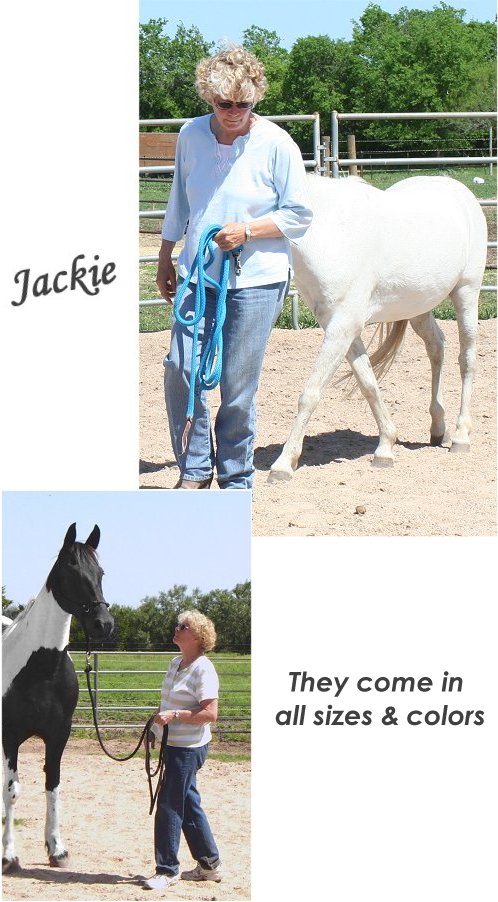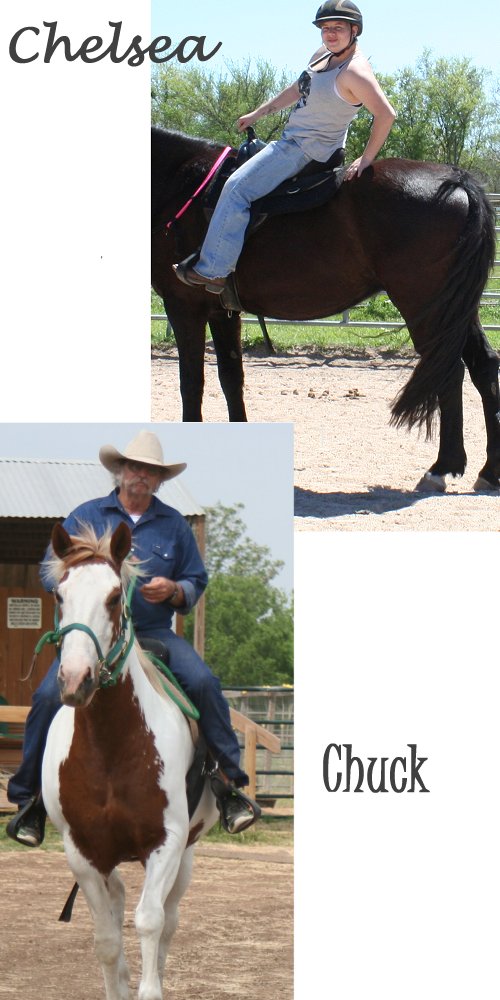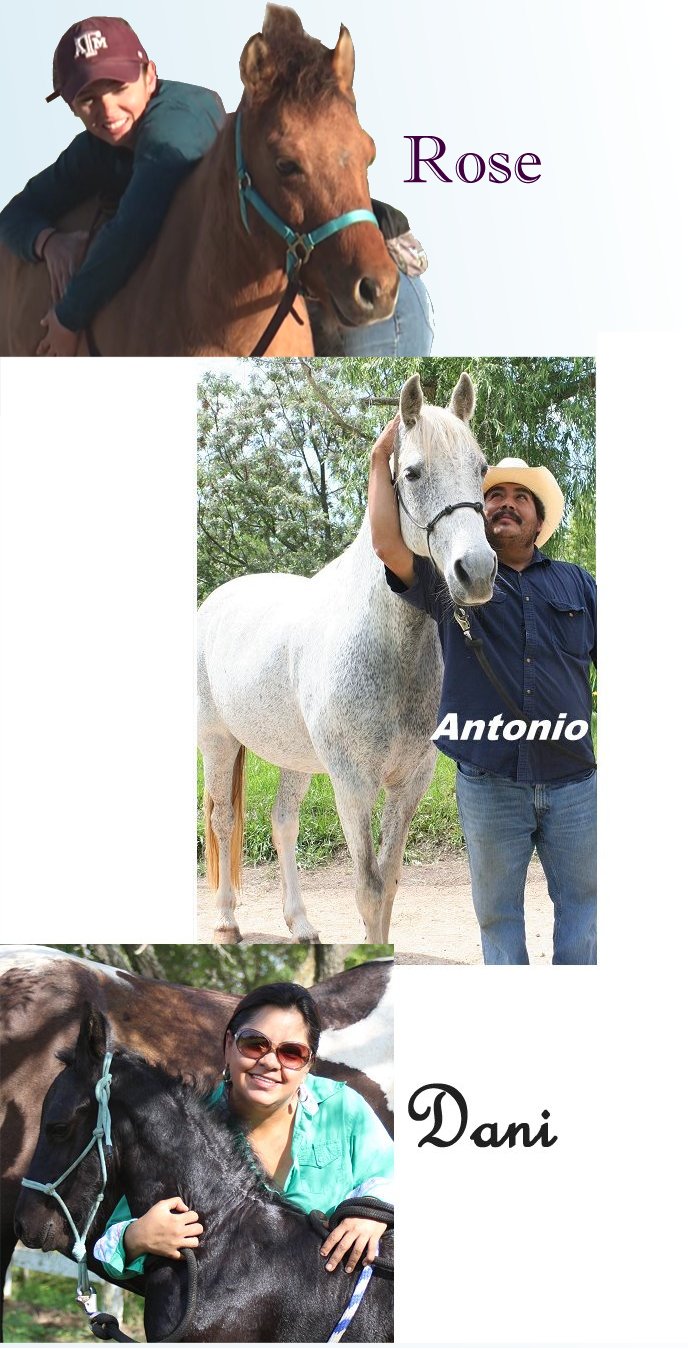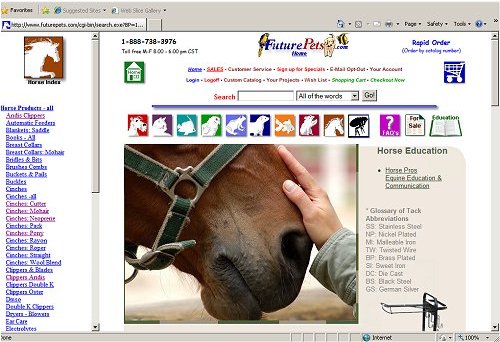Horse training is the music of psychological and physical pressure orchestrated by timing. It is a waltz or a tango between two synchronized partners.
The information and opinions presented here are meant for anyone who is as passionate about horses as we are.

This is a compendium of life at the Kristull Ranch in Austin, Tx. It was started to chronicle the journey through the world of horsemanship that is on-going at the ranch. As we learned together, the site has become a sort of Horsemanship for Dummies.
Most articles are written by myself, Jackie Nelson. I am an animal behavior specialist and horse trainer. I have been training dogs and horses for many years. I have a degree in Social Psychology and 40 years experience teaching animals and their humans how to maximize their bonds and live together as mutually respected and enjoyed companions.
While I have trained several horses, I do not train professionally for other people nor for compensation. My interests are strictly a personal passion and spiritual journey accompanied by my friends. I learned a lot along the way and still have much to learn.
See the rest of our staff of handlers, helpers, and trainers below. We have each been a training dummy, a crash dummy and just plain “a dummy” at one time or another. It’s been fun. It’s been serious. It is always a challenge. And it is always rewarding.


Horse Training Theory contains some perspectives grounded in my Psychology background and are a little different approach than you might find elsewhere.
Horse Training Exercises is an attempt to instruct the reader in the actual, hands-on techniques I have used to train one horse or another. I have included many exercises whose details were gleaned from other, more prestigious trainers in the world of natural horsemanship as well as my own experiences with my own reasoned techniques. If the reader is likely to run into one road-block or another during a particular exercise, I have tried to anticipate it and offer a solution.
I realize that there are “a million ways to skin a cat”, and every horse and every training situation is unique. Most of my horse training is directed toward the weekend rider rather than the professional or show horse. These advice and experience pieces are not meant to be the be-all or end-all of horse training. But if my enthusiasms and experiences can help you on your own journey I will be gratified. In the meantime, I love documenting my own path as a way to “chew and digest” my own lessons as I go along.
 I would like to thank Kristull Ranch in Austin, Texas for most of the animals and people presented in the pictures and videos on this blog. Most of the horses pictured are beautiful examples of the horses bred there and trained by myself and my very talented helpers and handlers.
I would like to thank Kristull Ranch in Austin, Texas for most of the animals and people presented in the pictures and videos on this blog. Most of the horses pictured are beautiful examples of the horses bred there and trained by myself and my very talented helpers and handlers.
Please contribute. We can all benefit from your insights and experiences as well.
Note that advice presented here is neither veterinary nor prescriptive in nature but offered only as an introduction to the topics addressed. Please follow up with extensive research and talk with your veterinarian and other equine specialists if you suspect that your horse has a medical condition.
Additionally, horse riding and training can be dangerous – even to the most experienced rider or handler. Not all methods work on all horses. Instruction presented here is an opinion based on personal experience and the published experience of noted horse training professionals. While we try to present relevant and valuable content, under no circumstances does horse-pros.com or its members or contributors take any responsibility for the well-being of any horse or person using any method outlined here.
Horse-Pros.com is sponsored by Futurepets.com. See hundreds of horse products and supplies at discount prices.
* Horse Pros© will publish comments or text at the sole discretion of Horse Pros© staff and in a time frame that is practical for our limited personnel.
The opinions presented here are not always the views of our experts or staff. We try to publish a well-rounded view of any topic.
Some materials may need extra space for detailed discussions. Those may take longer to publish.
No information will be published that encourages the abuse or mis- treatment of any animal.
By commenting here, it is assumed that you have written and have the right to disseminate the material you have submitted. Please do not copy from other published literature.
By submitting to Horse Pros©, you agree to give Horse Pros© the right to publish your text in perpetuity

I have a question on equine behavior, that I am struggling to understand and I am wondering if you shed some light on it.
It has to do with a horse’s behavior when ridden bridless. We work on a balanced rider basis inwhich direction, impulsion, are such that the horses are able to be ridden in their respective discipline bridless. The horses perform all gates and movements, softly and with self carriage. The behaviour I am trying to understand is that they sometimes drop their heads very low as if stretching their topline, still staying collected. It is not bit evasion as there is no bit. Remaining as I mentioned, soft, and supple. Discipline seems to have an impact on frequency, with our jumpers doing it more frequently,,,typically after a combination jump. with our cutting horses doing less frequently, typically when warming up…. Any theories??
I greatly appreciate you assistance. If possible I would love to discuss on the phone.
Thank you
Hi Phil. You are probably more of an expert than I.
Do your horses employ this behavior when riding on a bit or only when bridle-less? Do you do any dressage horses?
All dressage horses stretch their top-line, particularly in a slow trot or easy canter, between maneuvers and during warm-ups. It helps lift the back and collect the horse all over as opposed to just pulling his head and neck back to “look” collected when they are not.
Here is a picture of one of our horses doing his top-line stretch while running through a dressage warm-up. Is this the type of stretch you are seeing?
Collection is good for both cutting horses and jumping horses, and stretching the top-line is usually a good thing. Perhaps your bridle-less horses are really “getting into it” as they stretch their top-line out to perform more easily for lifting off (jumping takes back and rear muscles) and for direction changes (cutting which also requires back and rear muscles). It makes sense that the stretch is more important to the horse after more stressful maneuvers such as the double or combination jumps where he goes from collected to extended in quick succession and may feel the need to round his back up again for balance, comfort and relaxation.
I can’t explain why it happens more in a bridle-less horse than with a bit unless the bit or the rider using it are inhibiting that stretch somehow.
If this doesn’t make sense, perhaps another reader might give us some insight. I would love to hear another perspective.
I just happened to sort of stumble across your site…I read several of your articles and all I can say is WOW. It is fantastic. Well organized. factual and outstanding information in every catagory. Great presentation with no “cool-Aid” to drink to get the most out of it. It is an absolute great resource for not only beginners but pros as well. Keep it up!!!
I went to some of the links that have been mentioned in this blog and found some very useful information and products – lots for horses, but also many for other pets. I have an allergy to cats and found these cat grooming wipes very useful. I didn’t know I had an allergy to horses as well, but I got itchy and swollen eyes after petting a colt at a nearby ranch that belonged to a friend. While I didn’t use them on the horse, the next time I visited, I used them on MYSELF, wiping my hands and face frequently. It seemed to work pretty well.
Thanks, I do have a very good friend who is a Vet and I will give him a ring
Help!!! My first time contacting you but have been a reader and beliver for a while , My 7 year old gelding has a what I’ll call a runny nose but the mucious smells like all get out I mean ”stanky” . I know I have heard about this before but I can not recall anything about it . Keep up the amazing work. Thanks Col. Ricky L. Duhon
I hope some of our readers can help. I am not familiar with the problem, though it sounds serious. A runny nose is one thing. A smelly runny nose is another. Is the mucus green? Is he coughing? My first thought is to definitely call a vet. How about other readers? any advice?
It appears to be still going on today. I’d call the vet. Most equine vets charge less than small animal vets for treatments. He/she will probably take your horse’s temperature or a blood sample to look for high white blood count (indicating infection) or might just treat prophylactically with antibiotics. Let us know what you find out.